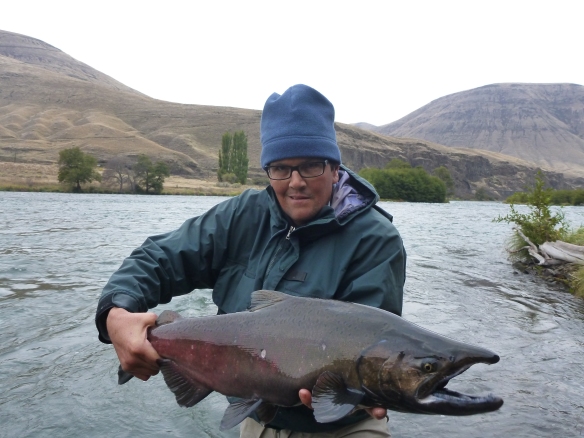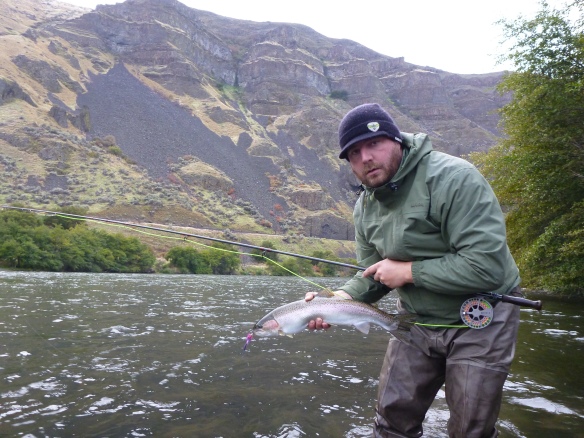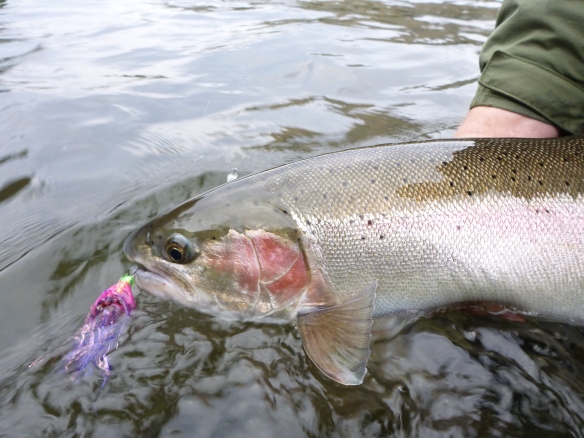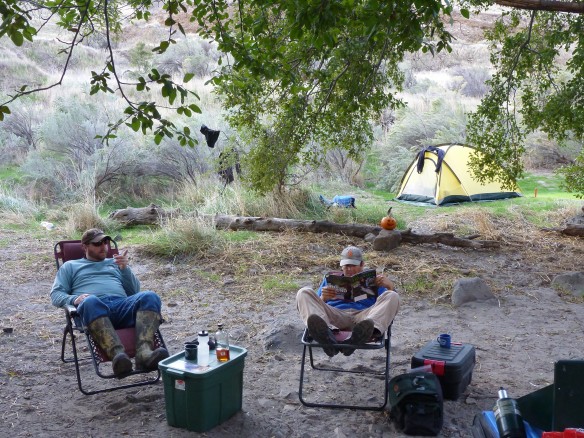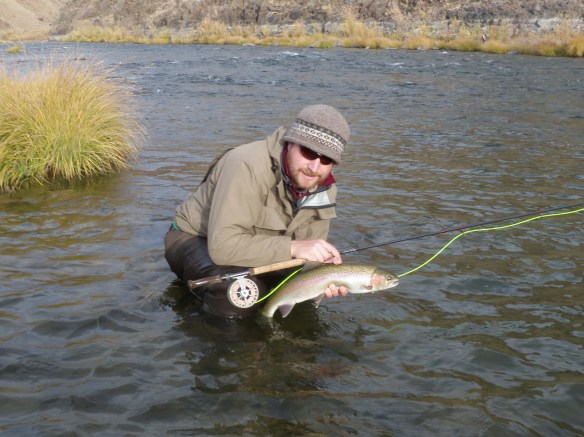October is fishing time in these parts.
With the low steelhead run this year we knew a few chinook (record fall run return year) would help fill the lull between yanking steel.
Russ is just back from a publicity tour for his new book “Row of Turds.” Proudly landed a gnarly specimen of the chinook species for me. His new book provides plain analysis and insight to the people’s perception of the 2013 Government Shutdown, along with a heart grabbing story about a recent date arranged online. The book flows nicely, making it an easy read by relating the subjects to an experience with a row of turds he stumbled into one morning years ago on a Deschutes River steelhead trip.
As I towed the salmonid beast towards the shoreline Russ quickly got the milty look in his eye again. First fish of the morning thing I guess.
With that out of the way the steelies came slowly.
Proven tactics in a proven spot produced this catch. More were expected at this stop, but we were reminded of the poor run size this year. Russ connected on the third cast, not the first, as in good run years.
Typical Deschutes scenery abounds throughout.
Fish were present throughout the lower river. I was averaging two grabs each time I fished through a run.
This is a self guided and self taught outdoor blog not a stockpond, pricy guide kind of place. I missed a few takes OK. I hacked my way downstream trying to perfect my D-loop and anchor placement. Kept my fly fishing good water. I figured it out….. Eventually I landed several Deschutes mini steelhead (22-24″).
Being a hacker I fish stuff deep and slow because that is what I know. It is not pretty, but my batting average is rising. Once I get it out there I can swing it pretty well. Self-guided.
These fish were aggressive. Russ caught one on a nymph, then another larger one quickly after. My minis were all on red stuff. Pro-tube stuff.
After day two I was fishing my tubes naked without a hook guide. I dropped a small pack of hook guides in the river. The tubes were still as grabby on some T-11. I eventually switched to some standard fly shop flashy stuff and stuck with it.
* Note 1. A spinner fished slow in a long jet boat run under the trees produced a donkey that evaded the camera at the last second.
When you find the right run (there are many). Fish it several times. I caught more than one fish per run. Let the line be taught on the swing, but only slightly, fishing a few feet under the surface. This wild doe exploded on the fly in the tail of a huge run.
Russ had a few insights into the shutdown between sessions of yanking steel!
Did you get your government shutdown steel?

